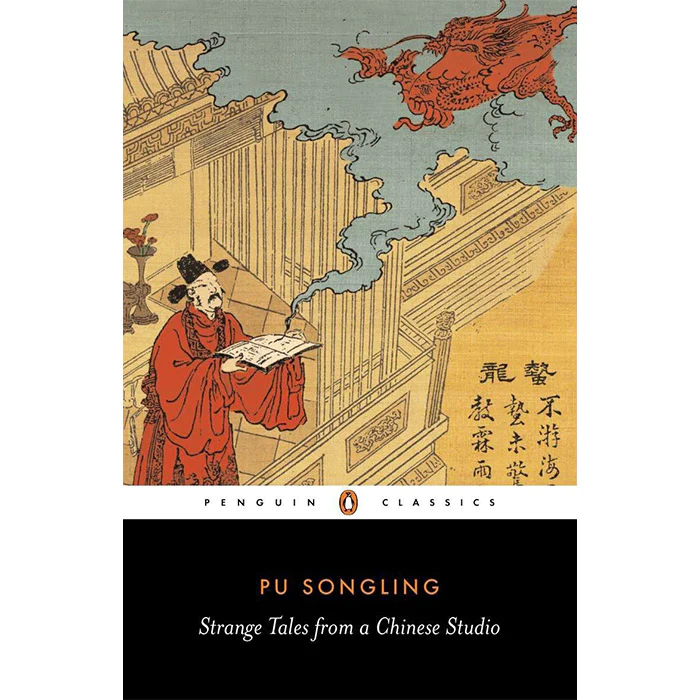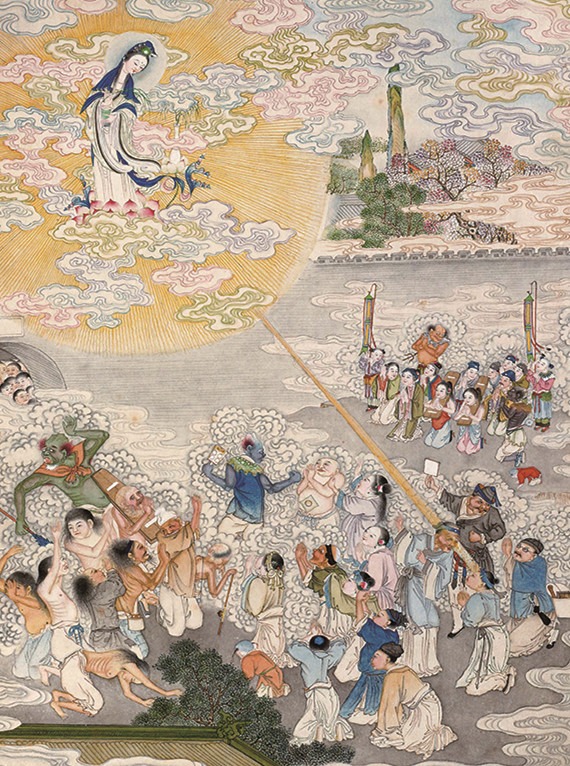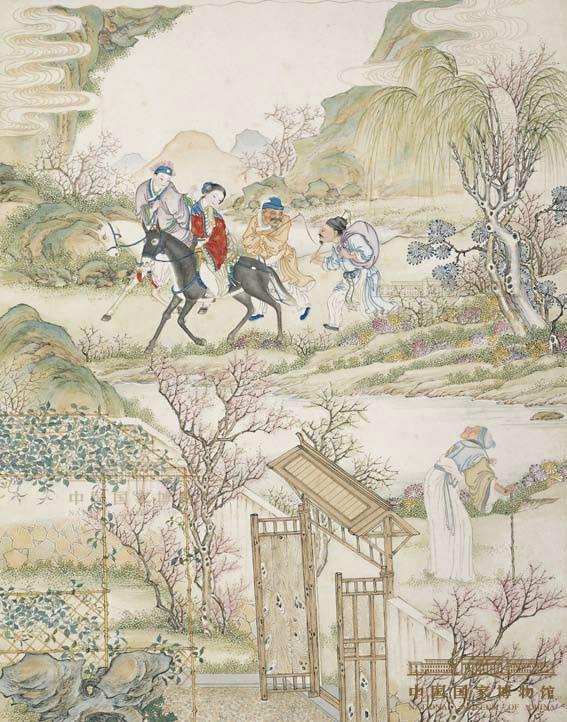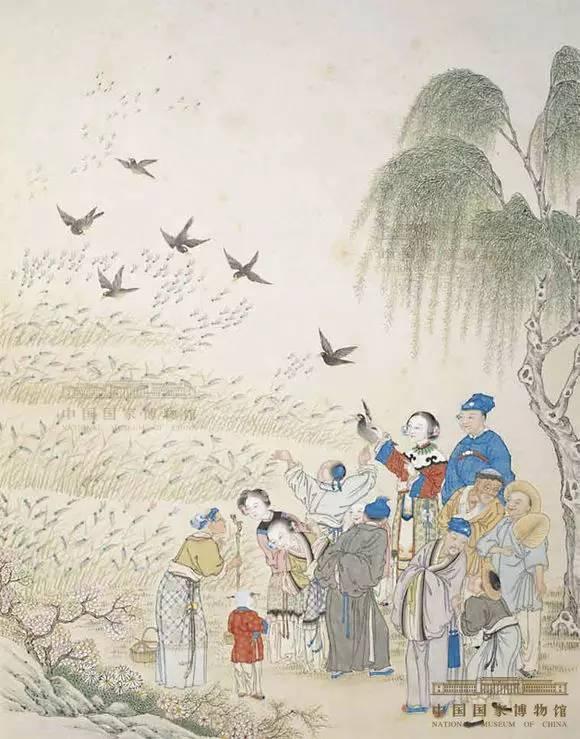In the rich tapestry of Oriental society, ‘Strange Stories from a Chinese Studio/Strange Tales from a Chinese Studio(聊齋誌異/聊斋志异)’ stands as a mesmerizing collection of tales that encapsulate the mystique and allure of ancient China. Authored by the renowned Pu Songling(蒲鬆齡/蒲松龄), these tales transcend time, weaving an intricate narrative of the extraordinary and the supernatural within the realm of everyday life.
Table of Contents
The Fascinating World of Strange Stories

Strange Stories from a Chinese Studio
This anthology, also known as ‘Liaozhai Zhiyi(聊齋誌異/聊斋志异),’ encompasses 491 tales spread across 16 volumes. Pu Songling(蒲鬆齡/蒲松龄), a prolific writer born in Zichuan, Shandong province, brought to life a diverse array of stories featuring fox-spirits(fairies), flower-spirits, ghosts, and goblins. These tales offer a unique glimpse into the nuances of Chinese folklore and societal intricacies.
Pu Songling: The Visionary Storyteller
Pu Songling, born in 1640 and passing away in 1715, left an indelible mark on Chinese literature. His masterful storytelling skillfully blurs the lines between the supernatural and reality, offering readers a profound exploration of the human experience through the lens of the extraordinary.
Pu Songling was born into a declining family of small landowners and merchants. At the age of 19, he took the provincial examination and scored first in the county, prefecture, and province, making a name for himself. He was appointed a student of the imperial academy.
After that, he failed the imperial examination repeatedly until he became a tribute student at the age of 71. In order to make a living, he worked as a tutor for a few years at the invitation of his fellow townsman, the magistrate of Baoying County, Sun Hui. He mainly worked as a tutor for nearly 42 years at the home of Bi Jiyou, a scholar in his hometown, until he retired in 1709. He died in January 1715 at the age of 76.
He devoted his entire life to writing the collection of vernacular short stories “Strange Stories from a Chinese Studio”. It is the most accomplished collection of vernacular short stories in China. It not only encompasses the best of the zhiguai (supernatural) and chuanqi (legend) genres, raising the artistic level of short stories to unprecedented heights, but also constitutes a continuous peak in the history of Chinese literature, along with the poetry of Li Bai and Du Fu and the novel “Dream of the Red Chamber”.
The Essence of ‘Strange Stories’
This collection, often described as zhiguai literature(志怪), reveals the enigmatic and unusual facets of ancient Chinese society. The tales are not merely intended to frighten but to seamlessly intertwine the supernatural with the mundane, exploring the philosophical concept of qing (情) – the passionate and emotional entanglement within both human and supernatural realms.
Legacy and Adaptations
Since its inception, ‘Strange Stories from a Chinese Studio‘ has transcended its literary boundaries, inspiring adaptations in various media forms. Many of the critically acclaimed tales have found their way onto screens, captivating audiences through film and television adaptations, resonating with modern audiences while retaining the essence of ancient Chinese storytelling.
The Strange in Chinese Culture
In the lexicon of Chinese literature, the word ‘strange’ (奇异 qíyì) embodies a multifaceted concept, encompassing the magical, the extraordinary, and the unexplained. These stories delve deep into the Chinese cultural psyche, illuminating the fascination with the uncanny and the inexplicable.
You can read these Chinese strange stories here.
Summary of Stories in Strange Tales from a Chinese Studio
“The ‘Strange Tales from a Chinese Studio‘ (《聊斋志异》) contains over four hundred tales. The stories in ‘Strange Stories from a Chinese Studio’ (《聊斋志异》) have diverse origins; some are derived from the author’s own experiences, some from historical themes, others from folk legends, and some are the author’s own creations. While some narratives bear traces of imitation, the author, with rich imagination and life experiences, reinvigorates and enriches these stories’ content.
The works in ‘Strange Tales from a Chinese Studio’ (《聊斋志异》) mainly fall into several categories:
Exposing the darkness of the real society
Corruption in politics, tyrannical officials, rampant power abuses, and the suffering of common people during that time are reflected in the book.
Stories like ‘The Weaving Maid’ (《促织》) depict the sorrowful experiences of a family catching a cricket to secure their lives but facing trials and tribulations, while ‘Xifang Ping’ (《席方平》) portrays the convoluted journey of Xifang Ping’s soul to the underworld to seek justice for his father. Although these works involve foxes and ghosts, they are essentially reflections of the dark reality. ‘Strange Stories from a Chinese Studio’ (《聊斋志异》) includes many works portraying the misdeeds of corrupt officials, like the official in ‘Plum Girl’ (《梅女》), who, for a bribe of three hundred coins, forces someone to their death; or the corrupt magistrate in ‘Book Fool’ (《书痴》), who, enamored with another man’s wife, abuses his authority to imprison people.
Revealing the various flaws in the imperial examination system
Pu Sung-ling, having faced setbacks in the imperial examinations throughout his life, was intimately familiar with the dark aspects of the examination halls and the torment inflicted upon scholars.
Works like ‘Plain Autumn’ (《素秋》) and ‘Divine Lady’ (《神女》) depict cheating in the imperial examinations, while stories like ‘Master of Literature’ (《司文郎》) and ‘Leaving Evil’ (《于去恶》) satirize the incompetence of examiners. Some works vividly portray scholars who were harmed by the imperial examinations, such as Yeh Sheng in ‘Yeh Sheng’ (《叶生》), Tao Sheng-yu and Leaving Evil in ‘Leaving Evil’ (《于去恶》), Hsing in the ‘Three Lives’ (《三生》), and Yü Shen and Yü Shih-chen in ‘Plain Autumn’ (《素秋》).
Depicting love between humans and foxes or ghosts
The most numerous stories in ‘Strange Tales From A Chinese Studio‘ (《聊斋志异》) involve love between humans and fox spirits or ghosts, like ‘JiaoNa‘ (《娇娜》), ‘QingFeng‘ (《青凤》), ‘YingNing‘ (《婴宁》), ‘LianXiang‘ (《莲香》), ‘A Bao‘ (《阿宝》), ‘QiaoNiang‘ (《巧娘》), ‘Graceful’ (《翩翩》), ‘Crow Head’ (《鸦头》), ‘Grass Hood’ (《葛巾》), ‘Fragrant Jade’ (《香玉》), all written in a highly engaging manner.
In ‘Fragrant Jade’ (《香玉》), Huang Sheng falls in love with the white peony flower spirit Fragrant Jade. Unfortunately, the flower is removed by someone, leading Huang Sheng to cry and mourn daily, eventually moving the flower deity, resulting in Fragrant Jade’s revival. ‘QingFeng‘ (《青凤》), portrays the love between the fox maiden Green Phoenix and Keng Ch’ü-ping, who, disregarding conventions and dangers, mutually admire each other and finally attain happiness.
Some works portray the resistance of young men and women’s love lives against those who oppress their love, such as ‘Continual City’ (《连城》), depicting Ch’iao Sheng and Lien Cheng’s love, thwarted by the father’s opposition. Lien Cheng, full of resentment, dies, and Ch’iao Sheng, grieving, also perishes, only to reunite as a couple in the afterlife. ‘Evening Glow’ (《晚霞》) tells the story of the geisha Ah Duan and Evening Glow in the Dragon Palace, who, disregarding the palace’s laws, love each other dearly and manage to escape the Dragon Palace, becoming a married couple in the mortal realm.
Over the centuries, people have enjoyed ‘Strange Tales From A Chinese Studio‘ (《聊斋志异》), and a part of this admiration stems from its depiction of love.

The works in ‘Strange Tales From A Chinese Studio‘ (《聊斋志异》) possess astonishing imagination. They delve into the extraordinary, including lotus flowers transforming into beautiful women, skirts turning into sailing boats, flowers flying out of sleeves, rainbow boats falling from the sky, and the healing power of reciting poetry. While these stories involve ghosts and foxes and are peculiar, they showcase human emotions beyond the oddities, distinguishing ‘Strange Tales From A Chinese Studio‘ (《聊斋志异》) from typical supernatural tales.
As Lu Xun said, ‘Apart from its detailed elaboration, ‘Strange Tales From A Chinese Studio‘ (《聊斋志异》) presents the ordinary, making flower spirits and fox demons more human-like, approachable, and forgettable as strange entities.’ These depictions significantly enhance the emotional impact of the storylines.”
Illustrations from Strange Stories from a Chinese Studio
Illustration for 《張誠》in《聊齋誌異》
Amidst trials and separation, the tale of Zhang brothers’ sacrifice and reunion unveils love and resilience in a touching saga…
Illustration for 《小翠》in《聊齋誌異》
The story is about a clever and smart fox bride named Little Cui, who repays a debt of gratitude to…
Illustration for 《小二》in《聊齋誌異》
The story depicts a girl named Xiao Er. Amidst a fallen family and afflicted lineage, she, with intellect, kindness and…
Illustration for 《羅剎海市》in《聊齋誌異》
The story depicts the countries of Roshak and the Dragon’s Realm. Roshak deems beauty as monstrous, granting power to the…
Another Illustration for 《張誠》in《聊齋誌異》
Zhang brothers’ enduring sacrifices, separation, and eventual reunion showcase unwavering familial love and resilience in the face of adversity….
Illustration for 《聶小倩》in《聊齋誌異》
Compelled by a millennium-old demon, the female ghost Nie Xiaoqian harms people through seduction. Admiring the impoverished scholar Ning Caichen’s…
FAQs
What is the meaning of Liaozhai Zhiyi?
Liaozhai Zhiyi translates to “Strange Stories from a Chinese Studio.” It’s a renowned collection of Chinese tales written by Pu Songling.
When was Pu Songling alive?
Pu Songling, born on June 5, 1640, in Zichuan (now Zibo), Shandong province, China, passed away on February 25, 1715, in Zichuan. He is the acclaimed author of “Strange Stories from a Chinese Studio.”
What are the strange tales from Liaozhai?
The collection comprises 491 tales spread across 16 volumes. It predominantly features stories about fox-fairies, flower-spirits, ghosts, and goblins. Pu Songling, born in 1640 and deceased in 1715, authored these tales.
What is the strange tales of Zhiguai?
Zhiguai xiaoshuo, translated as “tales of the miraculous” or “records of anomalies,” is a type of Chinese literature that emerged during the Han dynasty and further developed after the fall of the dynasty in 220 CE and during the Tang dynasty in 618 CE.
What is ‘Strange Tales from a Chinese Studio’ by Pu Songling?
It is a collection of Classical Chinese stories written by Qing dynasty writer Pu Songling, comprising close to 500 stories or “marvel tales” in the zhiguai and chuanqi styles.
When was ‘Strange Tales from a Chinese Studio’ originally written and published?
Pu Songling wrote the tales over a period of forty years from the late 1600s to the early 1700s, but it did not appear in print until 1766.
What themes are explored in ‘Strange Tales from a Chinese Studio’?
The tales blur the borders between the supernatural and everyday reality, exploring the philosophical concept of qing (情), passionate and emotional entanglements in the world, human or supernatural.
What is the historical background of the publication of ‘Strange Tales from a Chinese Studio’?
Pu Songling’s work circulated in manuscripts among friends but wasn’t published until after his death in 1715. The first print version appeared in 1766, with subsequent versions altering and censoring certain stories.
‘Strange Tales From A Chinese Studio‘ by Pu Songling remains a timeless treasure trove of tales, offering a captivating glimpse into the mystical and intriguing facets of Chinese society. Its legacy endures, enchanting audiences with its blend of the supernatural and the human experience, making it an indispensable part of literary heritage.
Dive into the captivating world of ‘Strange Tales From A Chinese Studio‘ and traverse the realms where the strange meets the familiar, and the supernatural merges seamlessly with reality.








